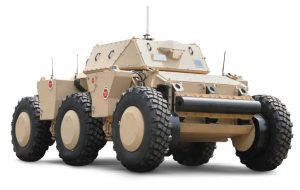Unmanned Vehicles: Seals, Gaskets, and Insulation for Marine Environments, Commercial Drones, and Accessories
Unmanned vehicles need custom seals, gaskets, and insulation that can withstand marine environments. Commercial drones and the electronics cases that are used with them also need reliable sealing and insulation. Elasto Proxy, a leader in custom-fabricated rubber products, can provide unmanned vehicle OEMs and their suppliers with value-added manufacturing that includes design assistance, help with material selection, prototyping, and low-to-medium volume quantities.
Previous articles in this series have described Elasto Proxy’s capabilities with unmanned aerial vehicles (UAVs) and unmanned ground vehicles (UGVs). In the conclusion to this three-part series, we’ll take a look at how Elasto Proxy can solve sealing and insulation challenges for unmanned surface vehicles (USVs), unmanned underwater vehicles (UUVs), and commercial drones. We’ll also take a look at sealing and insulation solutions for unmanned vehicle accessories. (more…)

 Unmanned ground vehicles (UGVs) need rubber UGV gaskets that can help protect sensitive electronics from high heat. UGVs also need weather-resistant door and hatch seals, and custom gaskets for cameras and LED lights that can handle extreme temperatures while keeping out water and dust. Manufacturers of UGV electronics, vehicle bodies, and imaging systems must meet different requirements, but custom fabrication can solve sealing and insulation challenges across the UGV supply chain.
Unmanned ground vehicles (UGVs) need rubber UGV gaskets that can help protect sensitive electronics from high heat. UGVs also need weather-resistant door and hatch seals, and custom gaskets for cameras and LED lights that can handle extreme temperatures while keeping out water and dust. Manufacturers of UGV electronics, vehicle bodies, and imaging systems must meet different requirements, but custom fabrication can solve sealing and insulation challenges across the UGV supply chain. Unmanned aerial vehicles (UAVs) need rubber gaskets that can protect UAV components from environmental conditions, flexural fatigue, and electromagnetic interference (EMI). Manufacturers of antennas, avionics, and airframes face different sealing and insulation challenges, but custom fabrication offers the UAV supply chain a value-added solution. Elasto Proxy, a leading supplier of specialty rubber products, custom-fabricates the rubber gaskets that unmanned systems need.
Unmanned aerial vehicles (UAVs) need rubber gaskets that can protect UAV components from environmental conditions, flexural fatigue, and electromagnetic interference (EMI). Manufacturers of antennas, avionics, and airframes face different sealing and insulation challenges, but custom fabrication offers the UAV supply chain a value-added solution. Elasto Proxy, a leading supplier of specialty rubber products, custom-fabricates the rubber gaskets that unmanned systems need. Data center cooling systems need to maintain temperatures that support the continuous and reliable performance of information technology equipment (ITE) such as blade servers, networking switches, and routers. If heat isn’t removed from the vicinity of sensitive ITE components, overheating can occur. If servers get too hot, onboard logic will turn-off computers to avoid damage. This protects data center assets, but results in downtime and loss of efficiency.
Data center cooling systems need to maintain temperatures that support the continuous and reliable performance of information technology equipment (ITE) such as blade servers, networking switches, and routers. If heat isn’t removed from the vicinity of sensitive ITE components, overheating can occur. If servers get too hot, onboard logic will turn-off computers to avoid damage. This protects data center assets, but results in downtime and loss of efficiency.






